James J DiCarlo
The ThreeDWorld Transport Challenge: A Visually Guided Task-and-Motion Planning Benchmark for Physically Realistic Embodied AI
Mar 25, 2021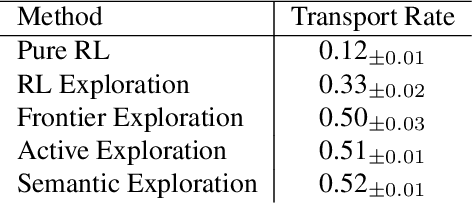
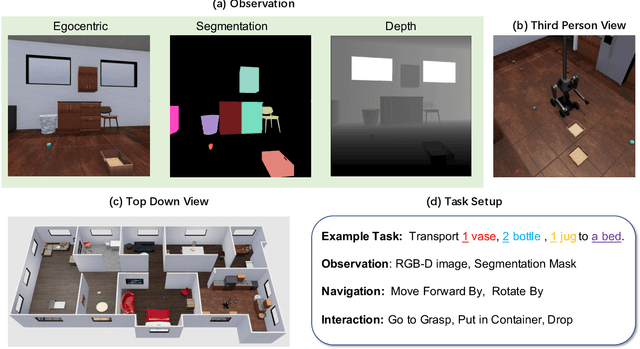
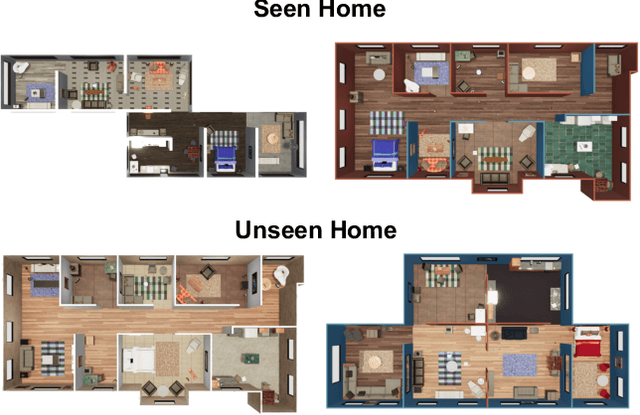
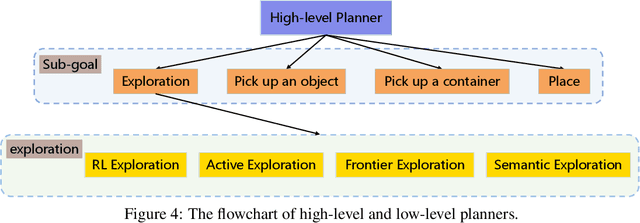
Abstract:We introduce a visually-guided and physics-driven task-and-motion planning benchmark, which we call the ThreeDWorld Transport Challenge. In this challenge, an embodied agent equipped with two 9-DOF articulated arms is spawned randomly in a simulated physical home environment. The agent is required to find a small set of objects scattered around the house, pick them up, and transport them to a desired final location. We also position containers around the house that can be used as tools to assist with transporting objects efficiently. To complete the task, an embodied agent must plan a sequence of actions to change the state of a large number of objects in the face of realistic physical constraints. We build this benchmark challenge using the ThreeDWorld simulation: a virtual 3D environment where all objects respond to physics, and where can be controlled using fully physics-driven navigation and interaction API. We evaluate several existing agents on this benchmark. Experimental results suggest that: 1) a pure RL model struggles on this challenge; 2) hierarchical planning-based agents can transport some objects but still far from solving this task. We anticipate that this benchmark will empower researchers to develop more intelligent physics-driven robots for the physical world.
Teacher Guided Architecture Search
Aug 04, 2018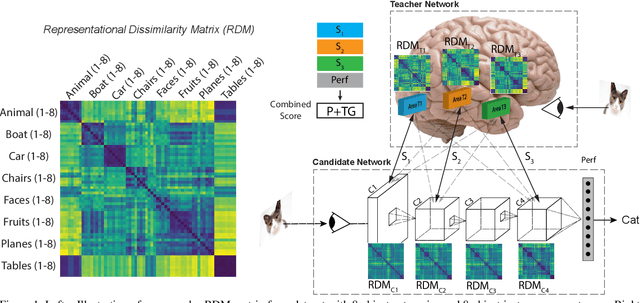

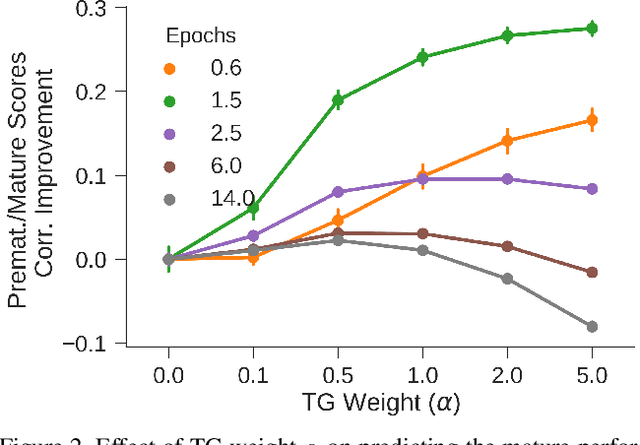

Abstract:Strong improvements in network performance in vision tasks have resulted from the search of alternative network architectures, and prior work has shown that this search process can be automated and guided by evaluating candidate network performance following limited training (Performance Guided Architecture Search or PGAS). However, because of the large architecture search spaces and the high computational cost associated with evaluating each candidate model, further gains in computational efficiency are needed. Here we present a method termed Teacher Guided Search for Architectures by Generation and Evaluation (TG-SAGE) that produces up to an order of magnitude in search efficiency over PGAS methods. Specifically, TG-SAGE guides each step of the architecture search by evaluating the similarity of internal representations of the candidate networks with those of the (fixed) teacher network. We show that this procedure leads to significant reduction in required per-sample training and that, this advantage holds for two different search spaces of architectures, and two different search algorithms. We further show that in the space of convolutional cells for visual categorization, TG-SAGE finds a cell structure with similar performance as was previously found using other methods but at a total computational cost that is two orders of magnitude lower than Neural Architecture Search (NAS) and more than four times lower than progressive neural architecture search (PNAS). These results suggest that TG-SAGE can be used to accelerate network architecture search in cases where one has access to some or all of the internal representations of a teacher network of interest, such as the brain.
 Add to Chrome
Add to Chrome Add to Firefox
Add to Firefox Add to Edge
Add to Edge